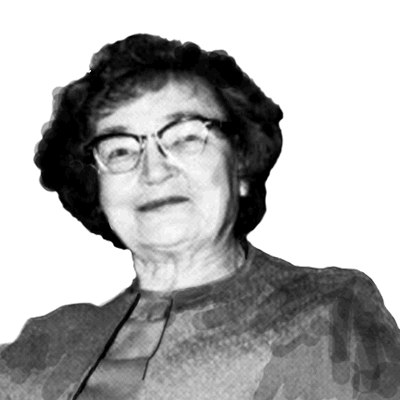Lydia Fohn-Hansen

Lydia Fohn-Hansen came to Alaska in 1925 for "a jaunt into the unknown" as a new home economics professor. During most of the next 35 years, she taught people across the state how to make a more comfortable, healthier life in the North using their often limited resources.
Fohn-Hansen was teaching home economics at Iowa State University when Charles Bunnell visited on a recruiting trip for the same job at the Alaska Agricultural College and School of Mines.
"It was a hot, muggy June day," Fohn-Hansen recalled. "Dr. Bunnell just sat and wiped his brow. We looked at each other for a few moments after the interview. I made up my mind. I wanted to go to Alaska."
In Fairbanks, Fohn-Hansen married but somehow managed to evade the university rule prohibiting further employment. In 1930, Bunnell asked her to serve as the home economist for the new Cooperative Extension Service.
An expert spinner, Fohn-Hansen developed methods for knitting qiviut, the cashmere-like fur from musk ox. In 1935, at the height of the Great Depression, she spent months living in a tent while helping the 200 colonists the federal government resettled from the Midwest to the Matanuska Valley.
Before her retirement in 1959, Fohn-Hansen wrote more than 400 publications. Their titles reflected her focus on the use and preservation of local foods -- "Alaskan potatoes: snacks to banquets," "The hunter returns with the kill" and "More vegetables please!"
"It was an exciting time to be doing extension work," she said. "People were just learning about nutrient values in foods. Vitamins and minerals were just being discovered."
More online about Lydia Fohn-Hansen:
- A Cooperative Extension Service article about Fohn-Hansen (PDF)
- A transcribed interview from tapes provided by the Tanana Yukon Historical Society done on January 22, 1970.
- UA Journeys article
